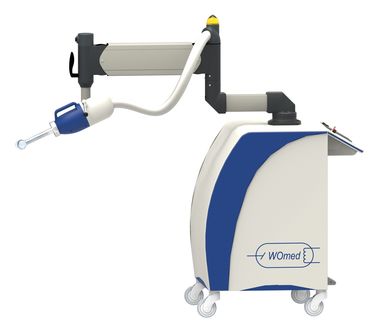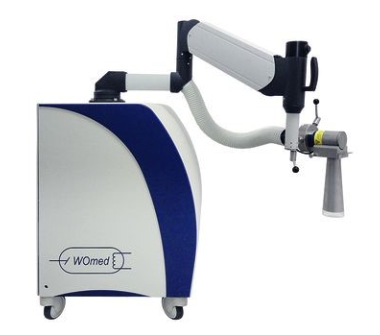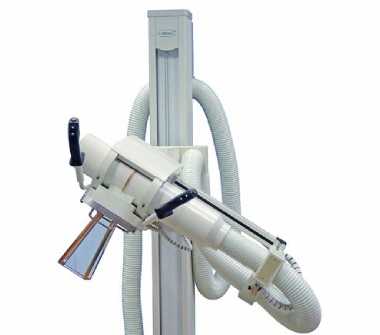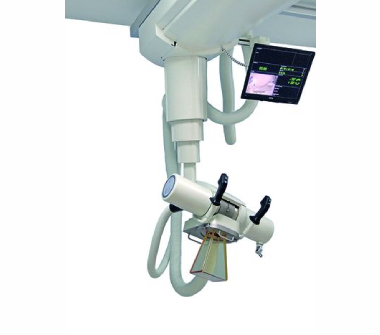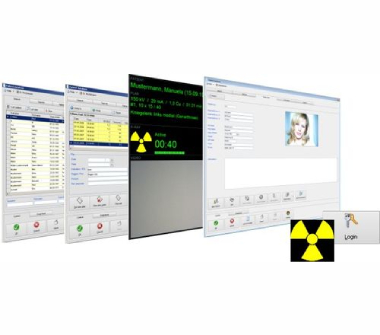SagiNova HDR Brachytherapy


What is SagiNova
With the help of SagiNova afterloader, applicators and catheters, the very small radiation source is driven from a shielded safe – located inside the afterloader – directly into or next to the tumor. A computerized treatment planning programme calculates precisely how long the source has to stay and radiate at the so-called dwell positions before being driven back into the safe. HDR brachytherapy can often be performed on an out-patient basis. Additionally, it is conducted in only a few fractions. This noticeably increases the patient’s quality of life.
The Components of AccuBoost
The Features of AccuBoost are Focused on Patients with Early-Stage Breast Cancer
As a targeted approach to the delivery of either the boost to the tumor bed or definitive 5-10 day treatment– also known as APBI, the AccuBoost Technique has a number of attractive features.
Ability to Choose: Ir-192 or Co-60 Source
The dose distributions based on the TG-43 formalism are equivalent for cobalt-60 and iridium-192. Both miniaturized sources have been in clinical use for more than 10 years and are suitable for the same clinical applications.
The high quantity of source transfers and the long working life of the miniaturized cobalt-60 source, developed by Eckert & Ziegler BEBIG, reduce time for source exchange logistics and increase valuable clinic uptime.
The anisotropy function of Co-60 leads to an advantageous dose distribution closer to the distribution of a point source
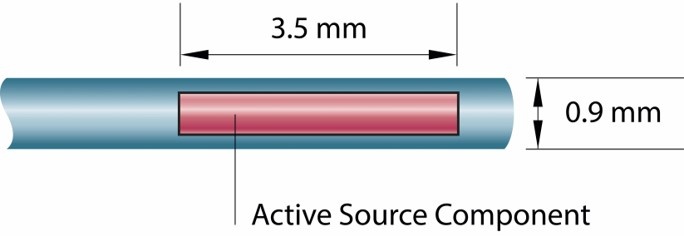
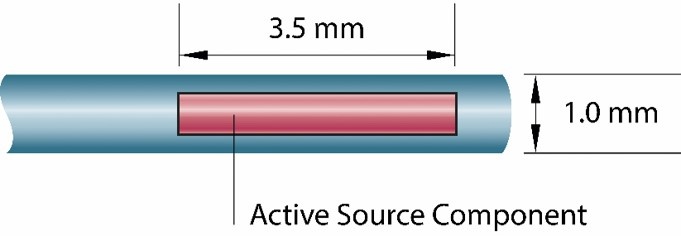
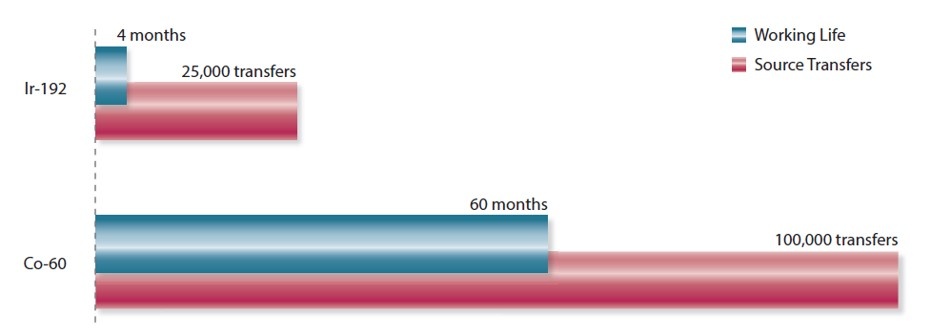


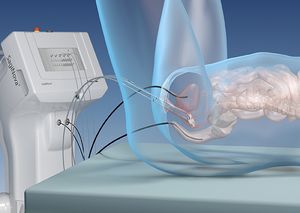
Exclusive, Integrated In-Vivo Dosimetry for Real-Time Dose Monitoring
The unique In-Vivo Dosimetry System of SagiNova® allows direct independent monitoring of doses to rectum and bladder at the control console alongside treatment information. Dose limit values can be defined via the SagiNova® treatment control software and warnings are displayed if bladder or rectum dose limits are exceeded. The complete data is integrated in the treatment report for a convenient documentation.
Since the system is operated directly from the SagiNova® treatment control station, In-Vivo Dosimetry is easily integrated into the treatment process with no additional equipment or screens.
QAssist™ Supports Quality Assurance Responsibilities
- Automatic system checks and calibrations
- Editable QA-testplans
- User defined positioning offsets per applicator
- Individual checklists Reminder function
- IAEA & ISO/DIN conformal presets
- Full digital documentation
- Configurations, test plans and checklist can be shared with partnering departments
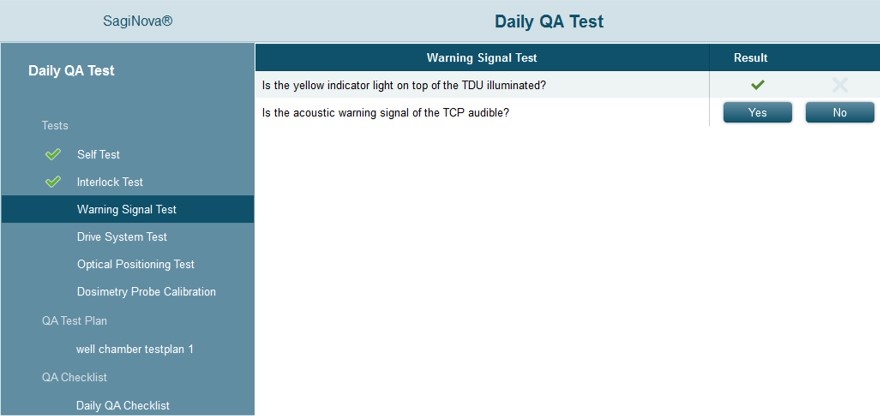



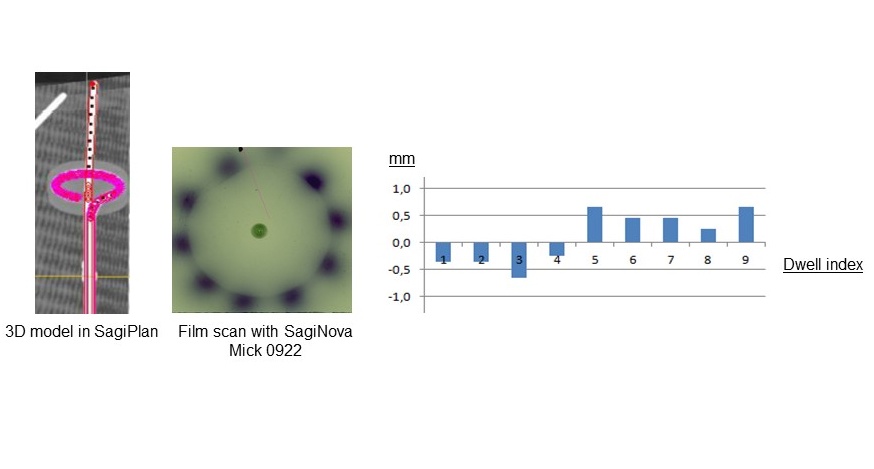
Comfortably ensure patient safety
- Tip reference system with automatic length measurement and verification
- Source is placed as planned
- All values in mm (1/10) outer catheter tip to source center
- Dummy source measures the channel length and checks if it is consistent with the database value
- User can acknowledge the measurement for catheters that are cut short
- Active source is positioned relative to tip measurement
50 Channel Support
- Supports all HDR treatments
- Complex implants with up to 50 channels (if required)
- Only one plan for all 50 applicators
- Application in two steps. One sequence. One patient chart.

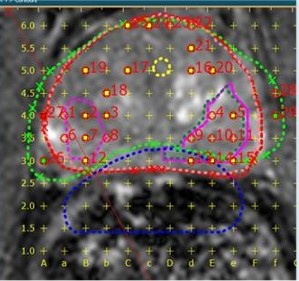
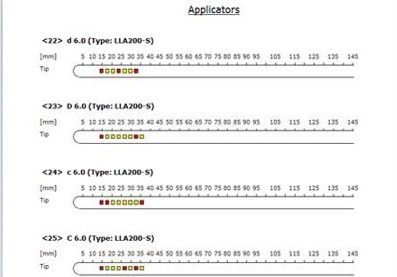
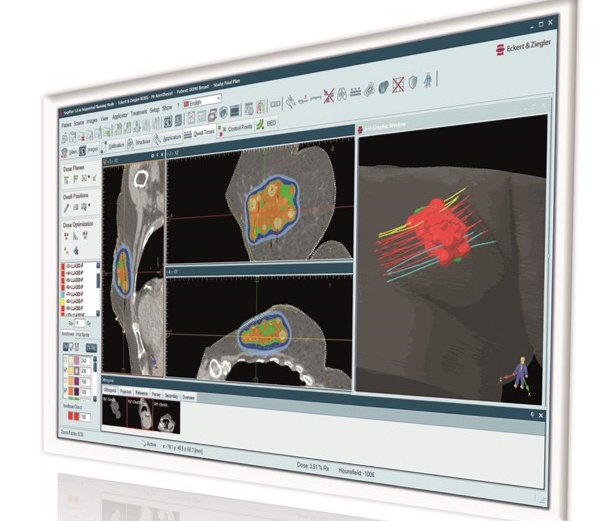
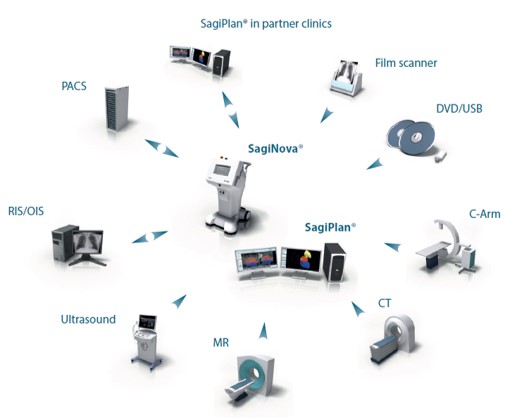
SagiPlan® Treatment Planning
SagiPlan® provides full DICOM support for a seamless integration in the hospital network
- Advanced Volume-based 3D planning
- Planning based on DICOM data sets from CT/MR,US or PET
- 3D reconstruction of applicator, 3D structures and 3D dose display with DVH analysis
- Dose distribution and contouring in any oblique plane
- Advanced inverse planning tools
- BED/EQD2 for planning and reporting
Real-time prostate planning
- Import of real-time ultrasound images with frame grabber and stepper
- Actual position of needles visible and therefore real-time adaption of treatment plans is done easy in operating theatre
- Live dose cursor and real-time update of DVH parameters
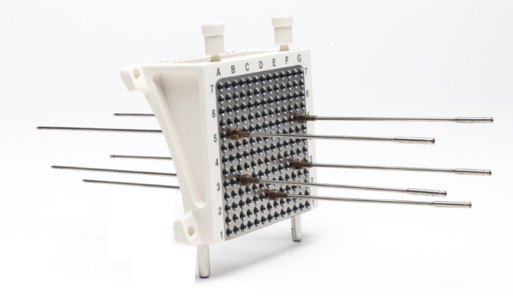


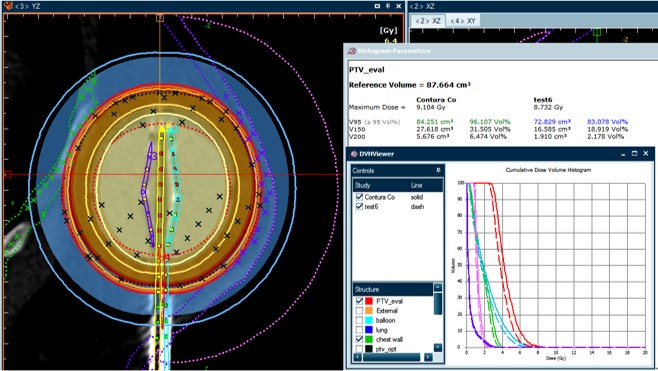
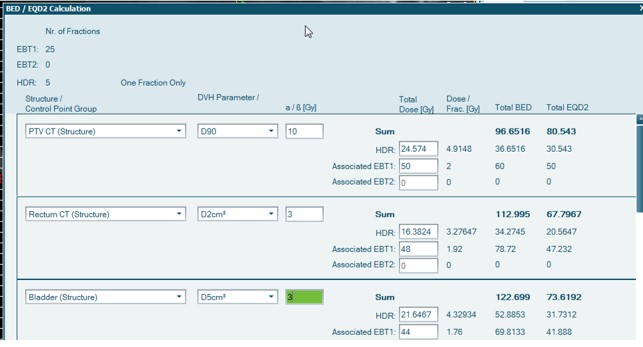
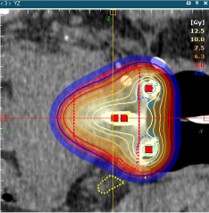
Plan Comparison
- Simultaneous display of isodoses
- Simultaneous display of histogram parameters and charts for up to 6 different plans
BED and EQD2 calculation for DVH parameters
- Calculation of BED for any DVH parameter of any structure
- Entry of data from EBRT treatments
- Reporting according GEC-ESTRO and ABS Guidelines
- Eliminates need of Excel tables
Expansive Portfolio of Applicators
state-of-the-art applicators for HDR brachytherapy. With applicators for intracavitary, interstitial and intraluminal access to gynecological, rectal, breast, esophagus, bronchus, head, neck and skin tumors, sites from head to toe may be treated.
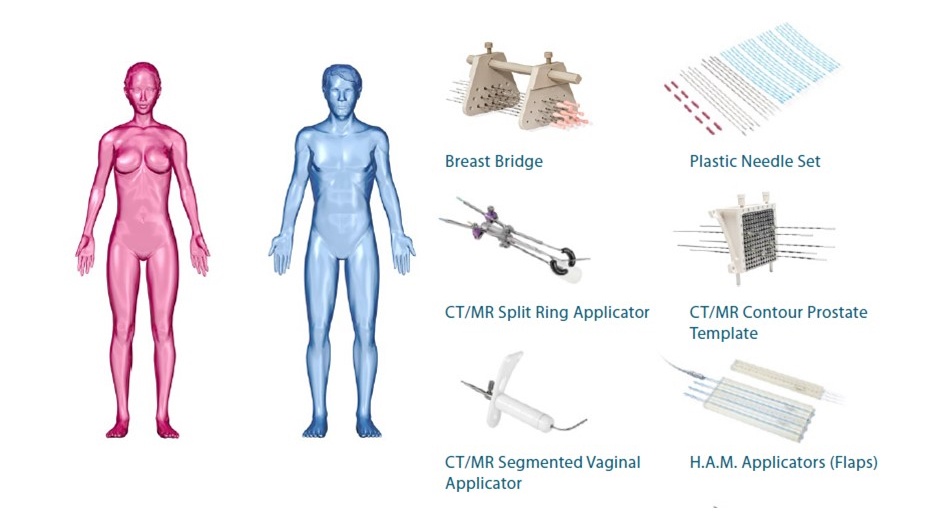
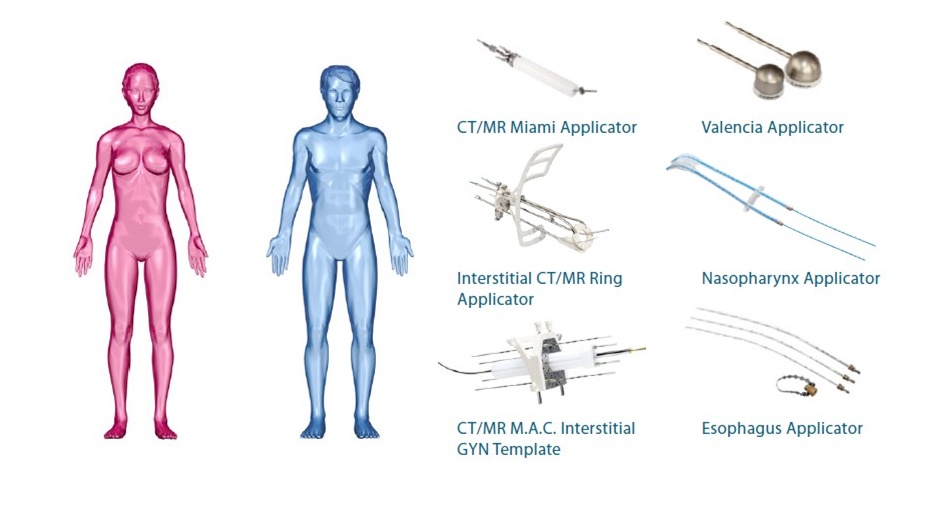
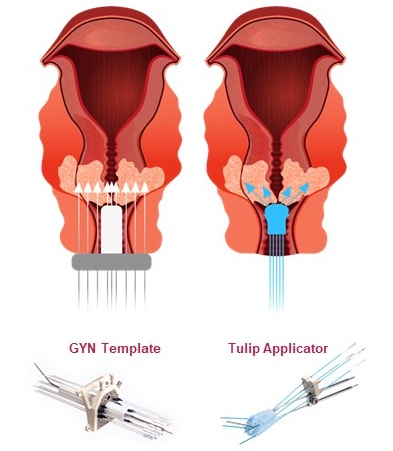

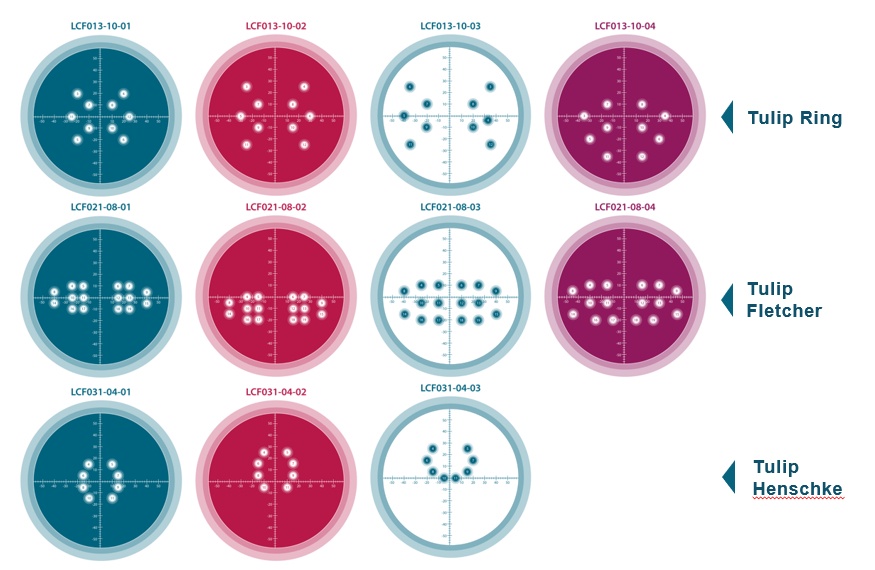
Oblique Angles Allow
Extended Tumor Coverage
- Multiple needle guide variants to cover different target areas
- Compact – close to cervix
- Oblique – towards parametrium
- Oblique extended – towards parametrium
- Oblique and downwards
- Tulip System facilitates placement of needles
after implant due to mid-vaginal placed Needle Entries - Regardless of which afterloader is used, the Tulip Applicators are ready for the job.
Efficient Parallel Planning
- Physician can contour in the best modality MR in parallel to the physicist who reconstructs in the most accurate modality CT
- Time saving method with highest accuracy
- No need to purchase, use or qualify MR markers with limited
accuracy in the overall system


